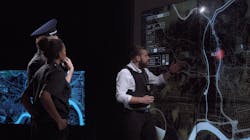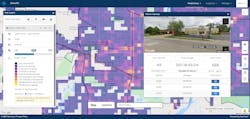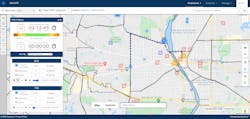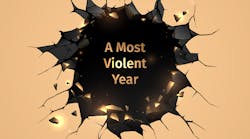Intelligence and data plays a large role in policing, especially in the investigations sector. Over the last decade or so, “predictive” policing software has developed and become more frequently used within departments. Though this type of intel is often thought to be strictly used in crime analysis, it is much more than that and may be used in several units with a law enforcement agency and it’s popularity has increased in other areas of investigation.
Originally, this type of software was developed to assess risk and pinpoint high areas of crime. This information is input into the software and once there, if there is a recurrence of criminal activity in a particular region, then maps and flow charts are compiled to show officers and command staff what sectors of their city need more attention or an added patrol presence.
The face of predictive policing software has changed. The company once known as PredPol, now Geolitica, has optimized their software in the best way possible for law enforcement agencies. “Rather than ‘predicting’ that a crime will occur, we conduct risk assessments, using anonymized historical crime data to identify the highest-risk locations for specified crimes by day and by shift,” says Brian MacDonald, CEO of Geolitica. “Officers patrol those locations to help proactively prevent those crimes from occurring.”On the investigative side, this data may be used to help track suspects or alleged suspects in a particular case. For instance, if a police department is working on a case involving a string of burglaries, the data generated from each call placed at the police department can be broken down into specific details that may shed some light on a case. When detectives need to track burglary activity, they can look at where the burglaries have taken place, what time, as well as demographic information. From there, not only can the detectives relay this information to officers on duty, but this allows investigators to set up surveillance in a much more effective way that may result in stopping crime before or as it is occurring. Having this type of data at your fingertips is of great value to undercover work as well.
Utilizing this type of intelligence would be ideal when searching for a homicide suspect, keeping track of drug activity, or monitoring domestic violence situations. Geolitica offers their customers the chance to make the software their own. MacDonald says many of their customers desire additional control of what locations they send their officers to. “Their crime analysts had areas that intel suggested needed additional patrol,” says MacDonald. “Other events, like concerts or sporting events, required officers to patrol in areas that wouldn’t appear on a crime heat map or a PredPol box.” The company then added a customization box which allows command staff to set their own patrol location boxes. Furthermore, this type of software allows agencies to track, communicate, and investigate in one place.
MacDonald said their customers use their platform to communicate daily missions and patrol guidance to officers, track officers throughout their shifts, and create management reports for crime analysts, command staff, and community stakeholders. Being able to perform all of these tasks in one place ensures efficiency, transparency, accountability and safety for all officers.
Heat maps provide data on how often or how long officers visit a particular location. Other forms of data that are provided can show the most active areas of a community as well. Command staff can then take that information and determine whether they need to assign more officers in one area of the city or if patrol needs to divert their attention to a different area.In the present atmosphere, communities and the public in general desire their local police to have complete transparency. Programs such as Geolitica can help bridge the gap between law enforcement agencies and their communities. Since the software provides the capability to generate flowcharts, maps and other visual resources, command staff can share these images with their communities.
“Geolitica is really about patrol operations management,” says MacDonald. “We improve transparency between the department and the community. We provide accountability for officers on patrol, and we make departments more effective at keeping communities safe with the resources they have.” Those same visual aids can also help bring a case to life in a courtroom or in a briefing for the next patrol shift. The more information the better and with more information shift supervisors can coordinate what areas of town their officers should focus on when it comes to patrolling.
Policing entails numerous skills all rolled into one. However, you cannot have one without the other. Every department needs each element of training: tactical, evidentiary, investigative, leadership and implementing intelligence onto the streets and in casework. By implementing this type of data into a department, patrol officers and detectives can work together in a more efficient way to keep their communities safe.





